In this tutorial, you will learn how to efficiently edit slide layouts in PowerPoint and set them up. We will explore the various functions using a practical example and how you can customize layouts to give your presentation a professional touch.
Key Insights
- Using layouts optimizes your presentation.
- Layouts can be duplicated and renamed.
- Adjustments in layouts affect all associated slides.
- The outline view helps organize slide content.
Step-by-Step Guide
To edit slide layouts in PowerPoint, follow these steps:
First, open PowerPoint and prepare your layout. Go to the master view where you can see all layouts and their customization options.
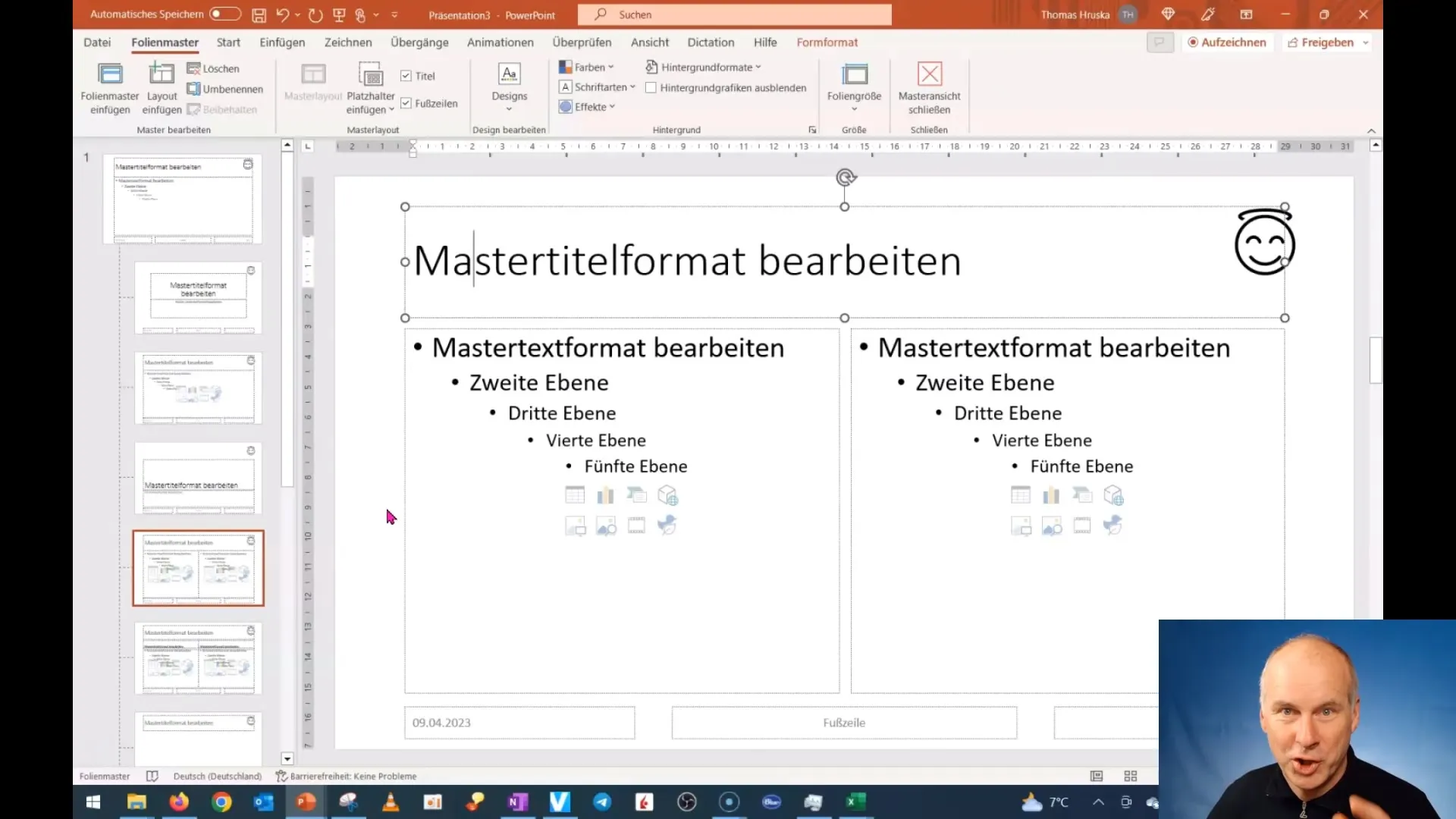
Now select the "Two Content" layout. You can duplicate this layout if you need a similar structure and give the new layout its own name.
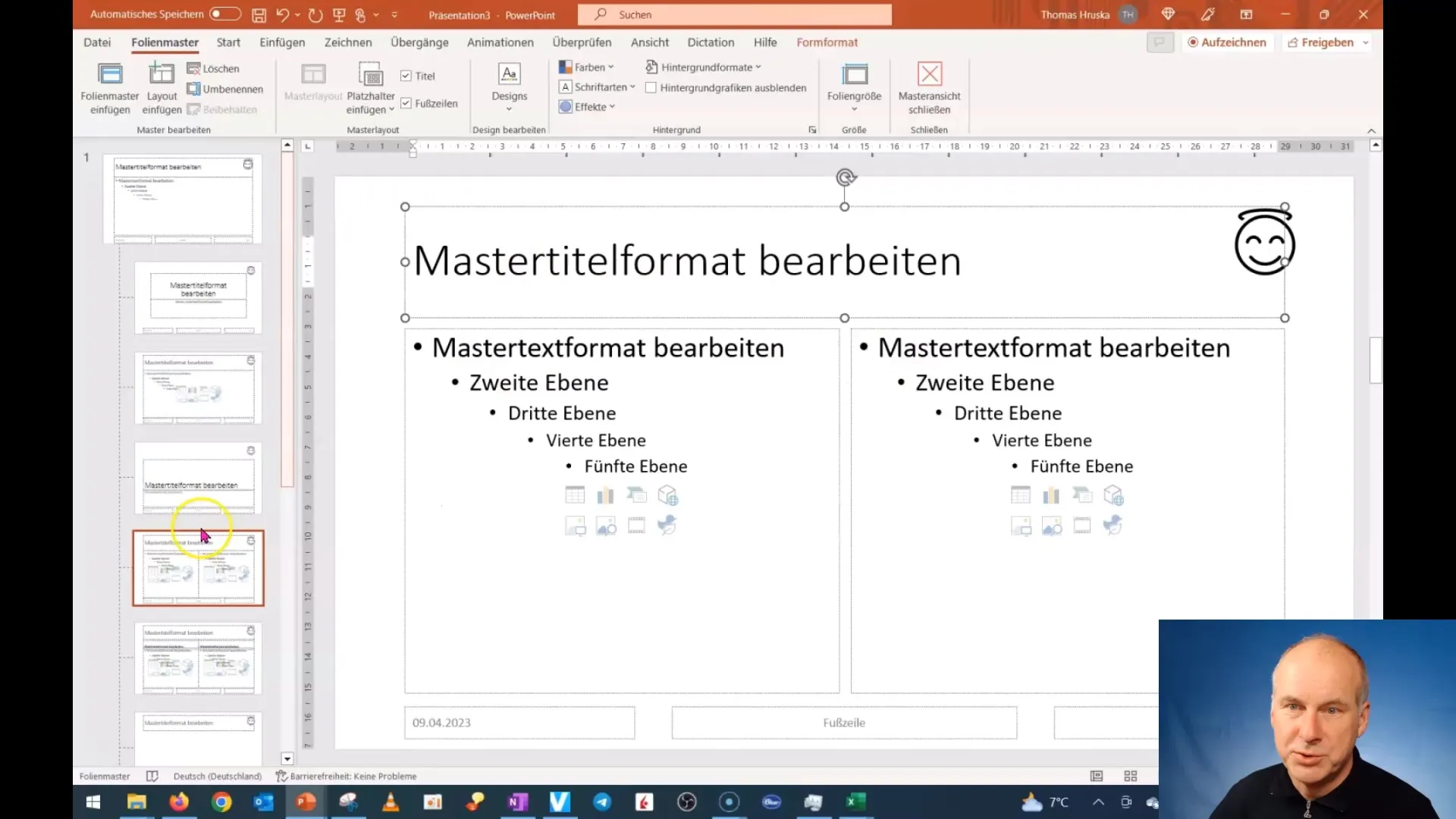
Right-click on the duplicated layout and select the "Rename" option. For example, name it "Test 1" to easily find the layout later.
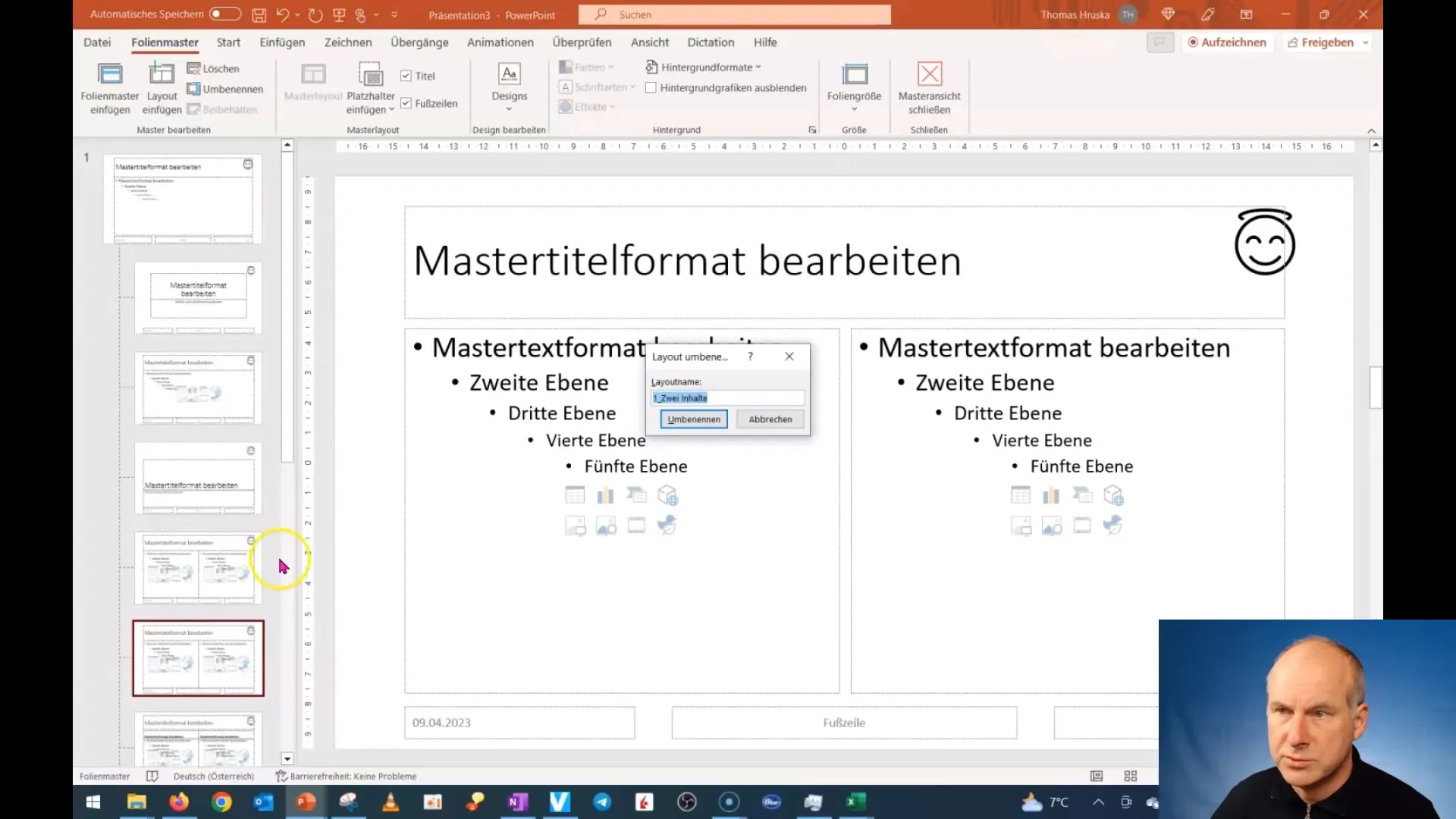
After renaming the layout, close the master view. Go back to your normal presentation and create a new slide. Choose the "Test 1" layout for this slide.
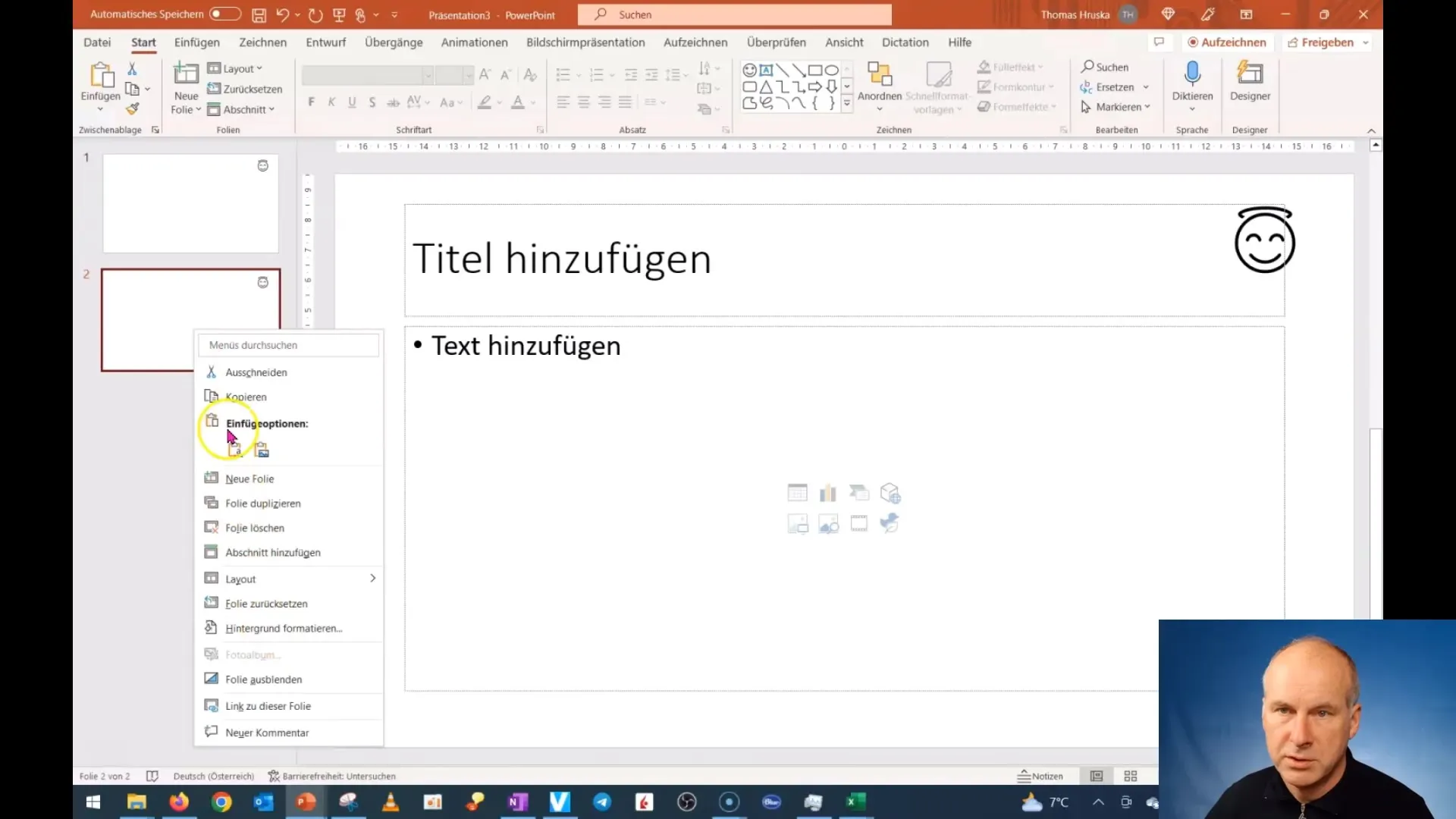
Now you can further customize your presentation. Go back to the master view and look for "Test 1" among your slides. Select this layout again and start customizing.
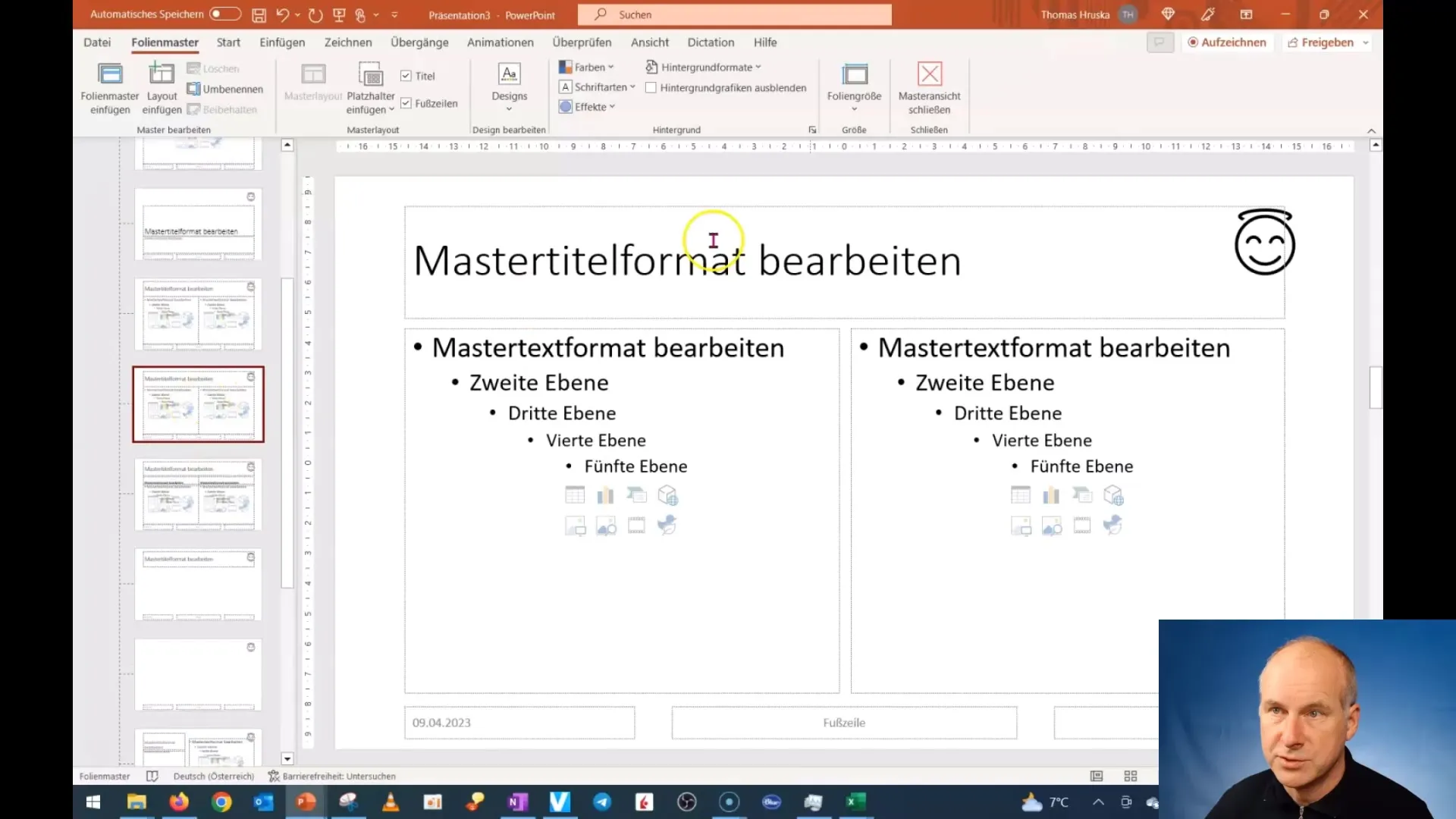
For example, you can change the font. Choose a legible font in an appropriate size to ensure readability.
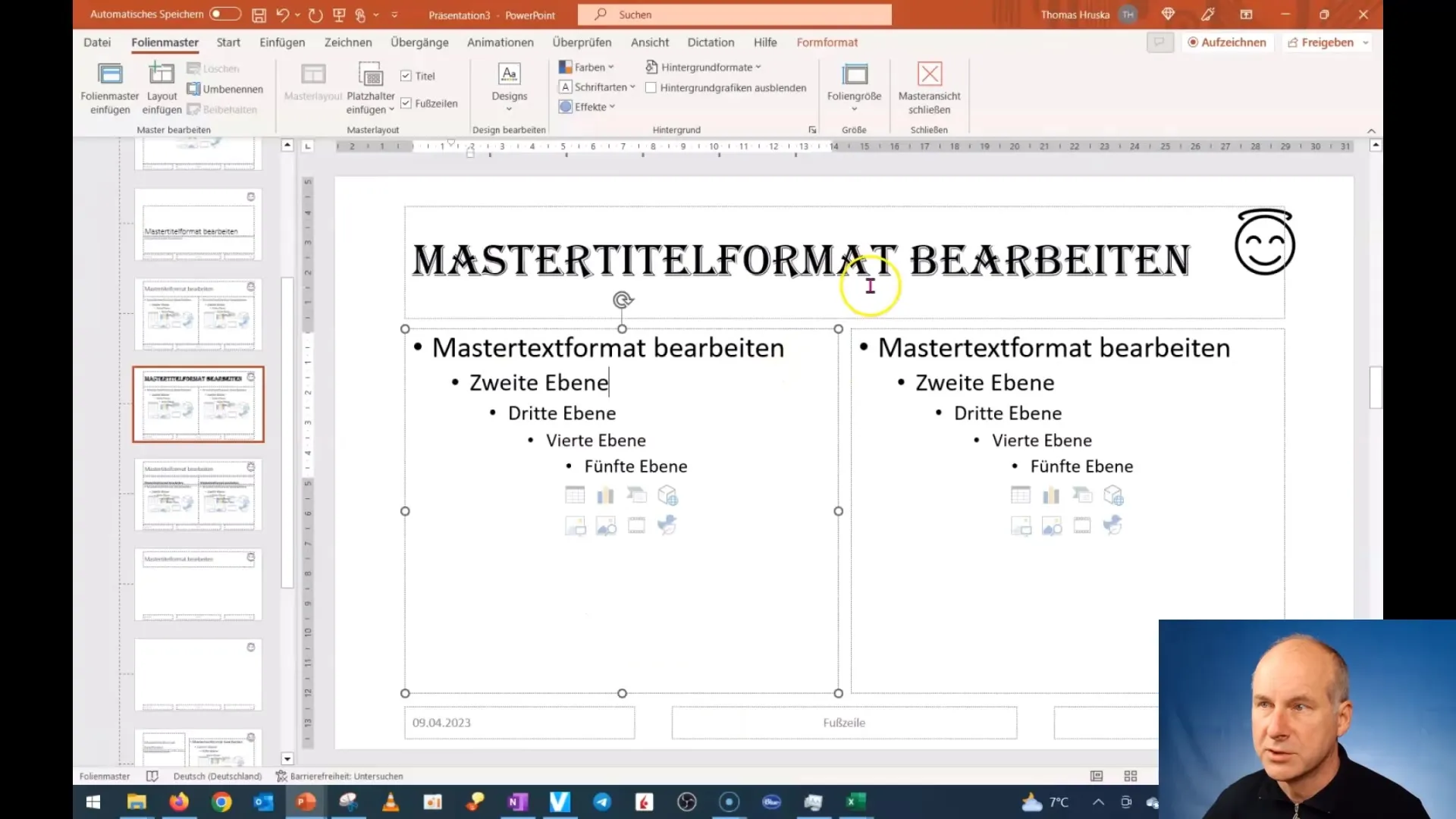
Additionally, you can adjust the size of the text box. If you are presenting technical content, make sure there is enough space for images.
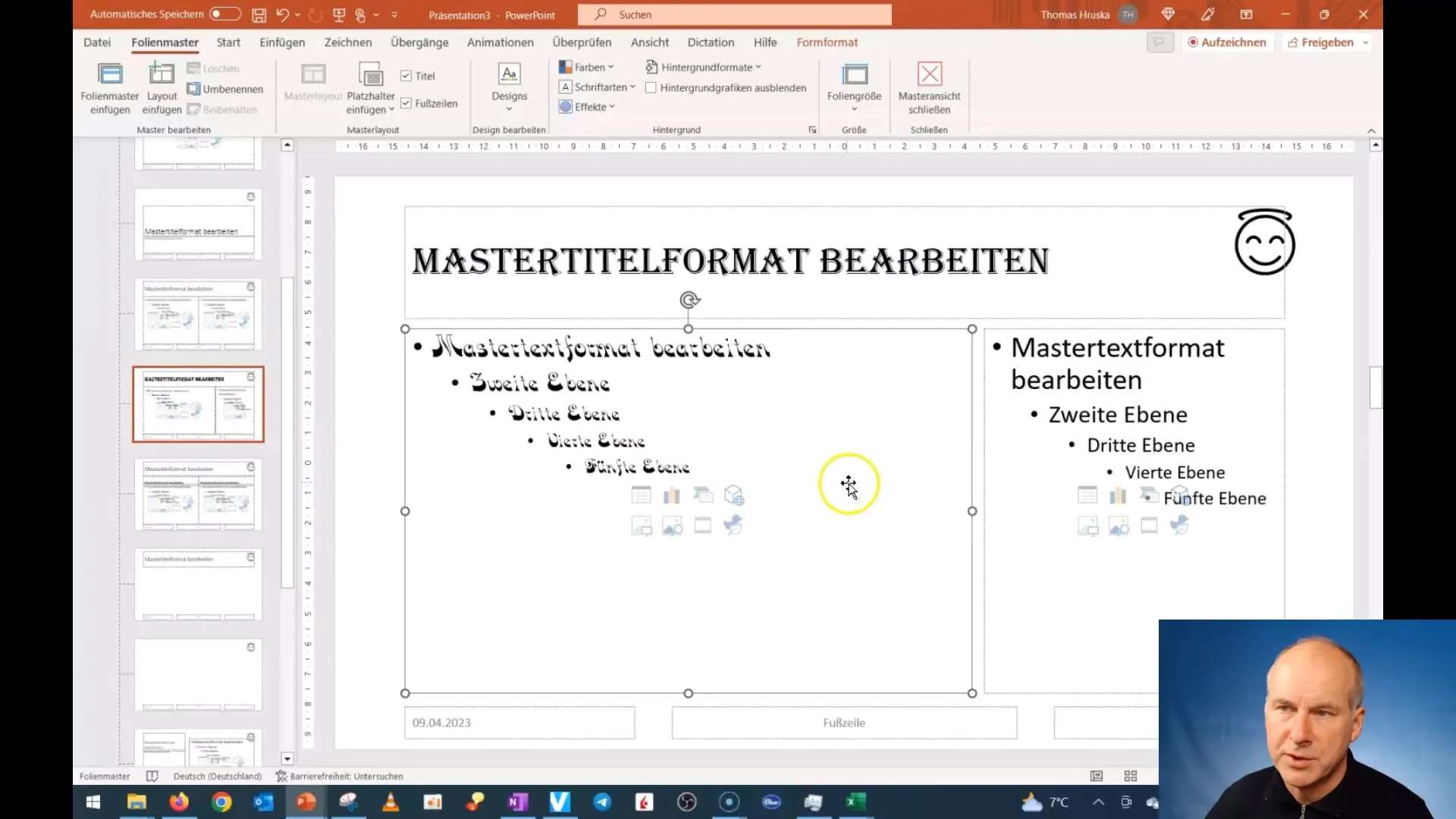
It is also useful to insert test content like text from Wikipedia. This helps you see how font sizes and layouts work in practice.
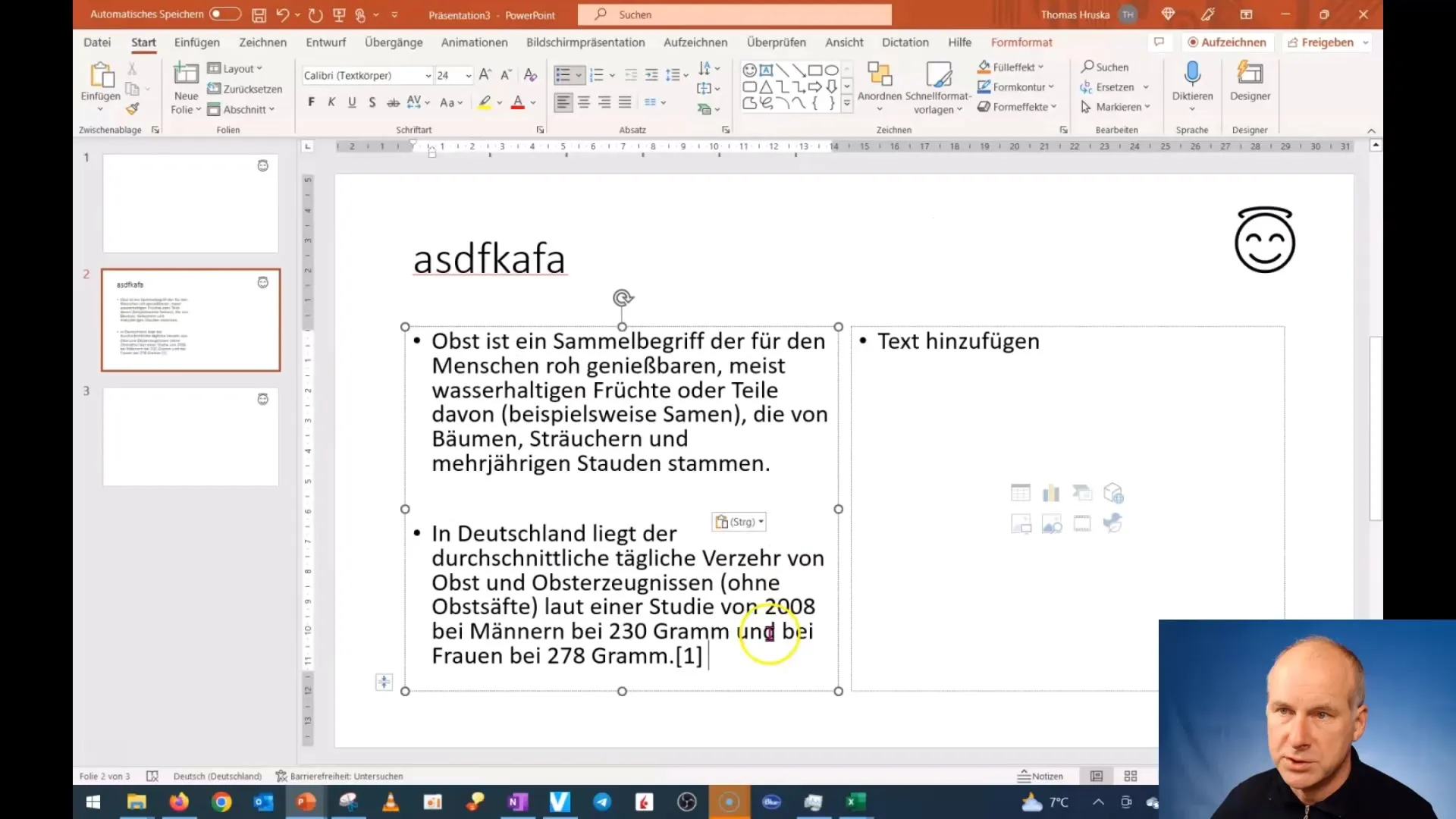
Insert the text into the text box and ensure that the font size is optimized for the length of the text. The font size automatically adjusts as you type.
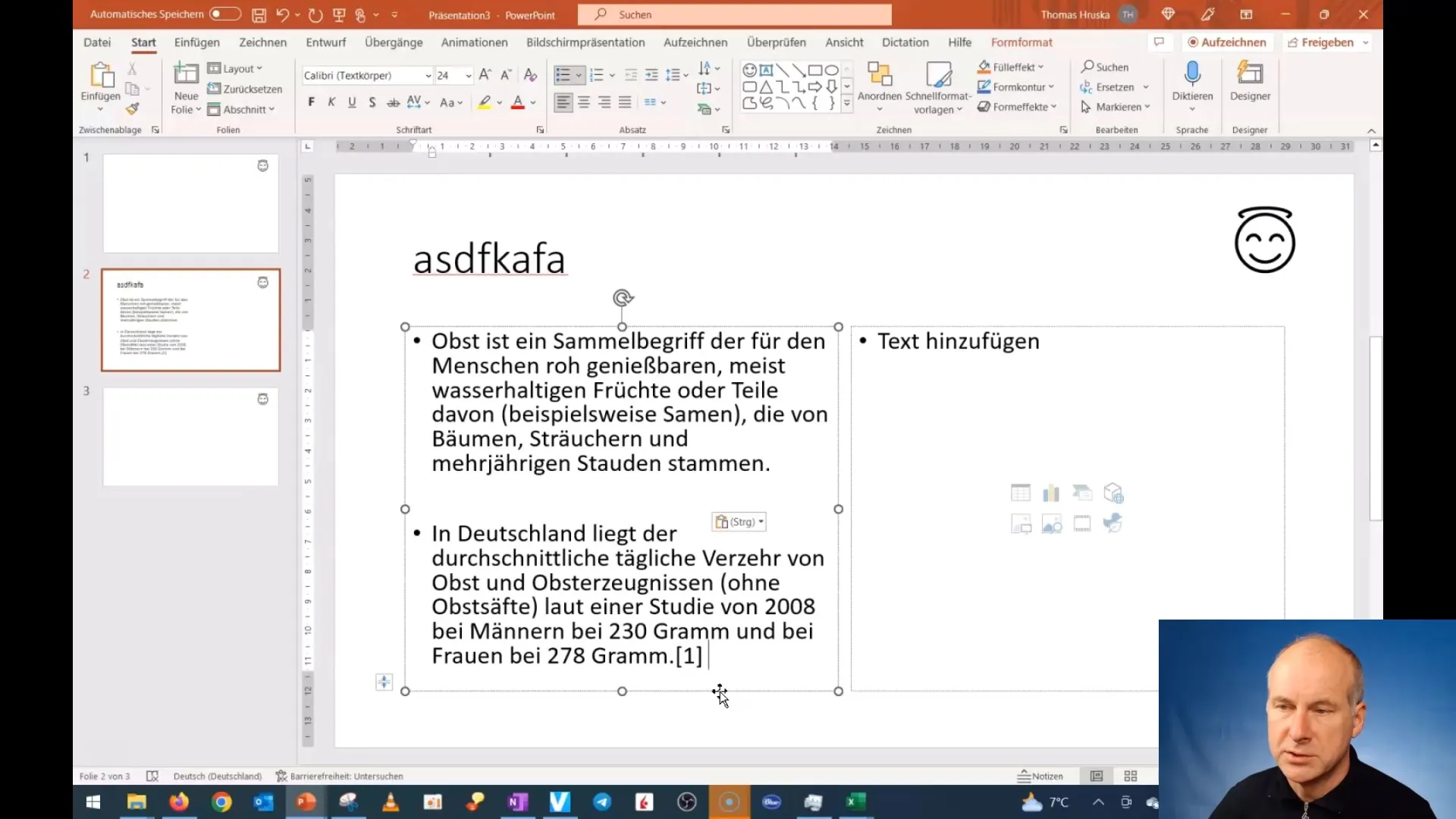
If you realize you need a similar layout for another slide, you can simply take over the existing layout. Right-click on the slide and choose the "Test 1" layout.
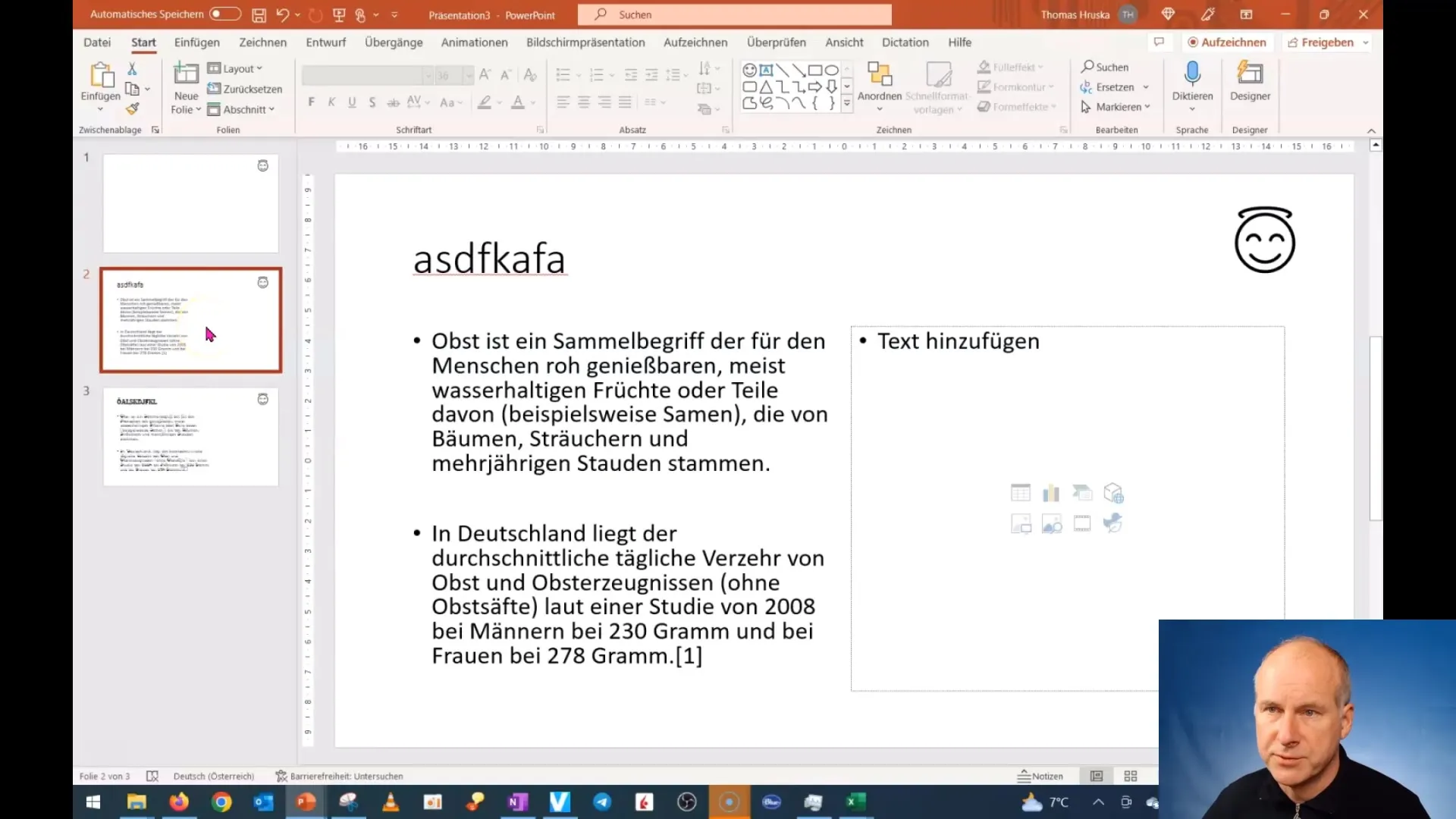
This way, everything on that slide will be displayed according to the new layout. This allows you to achieve a consistent look throughout your entire presentation.
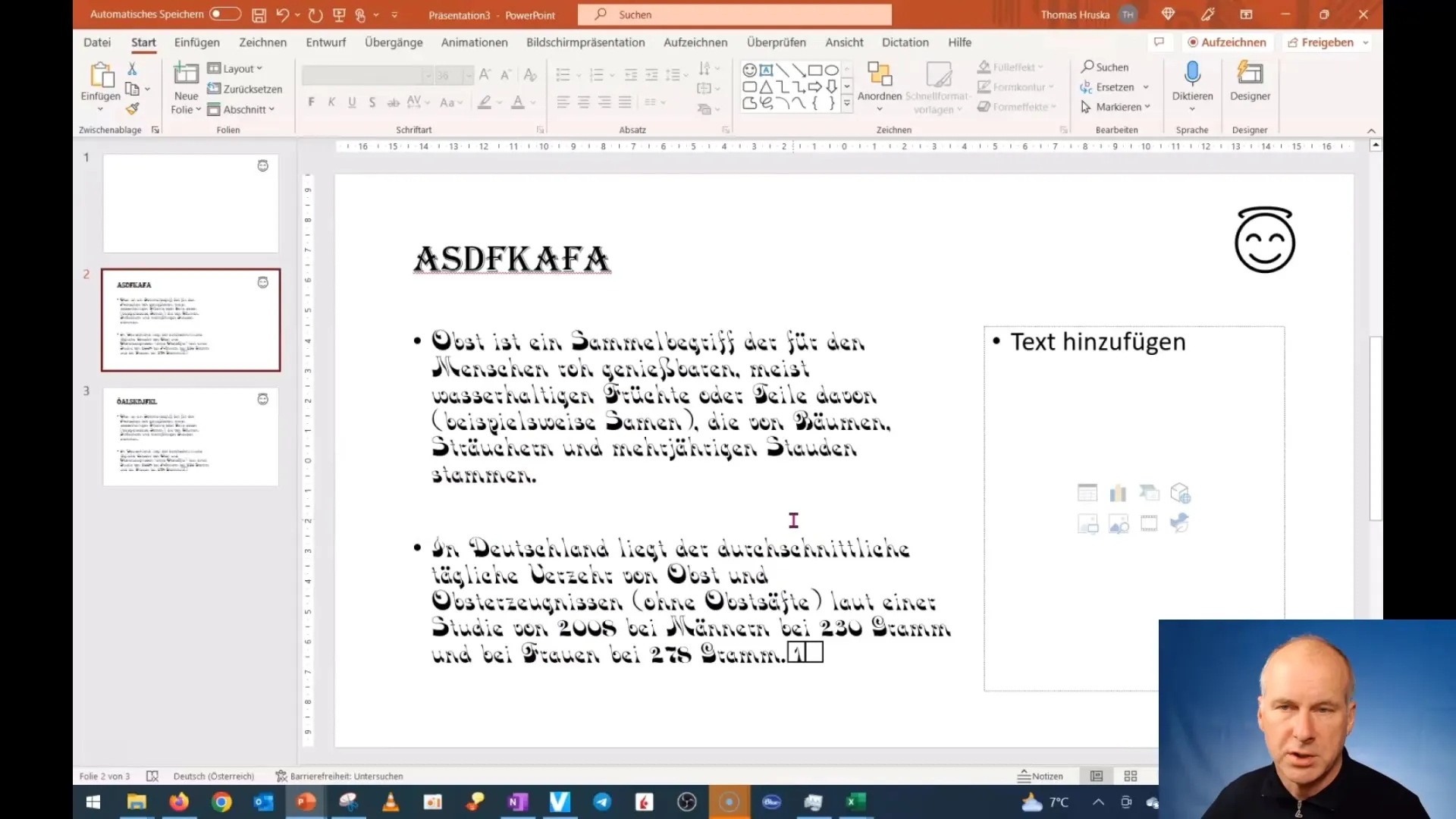
By effectively using layouts, PowerPoint supports you in many situations and makes designing your presentation easier. It is important to have an overview of the entire structure.
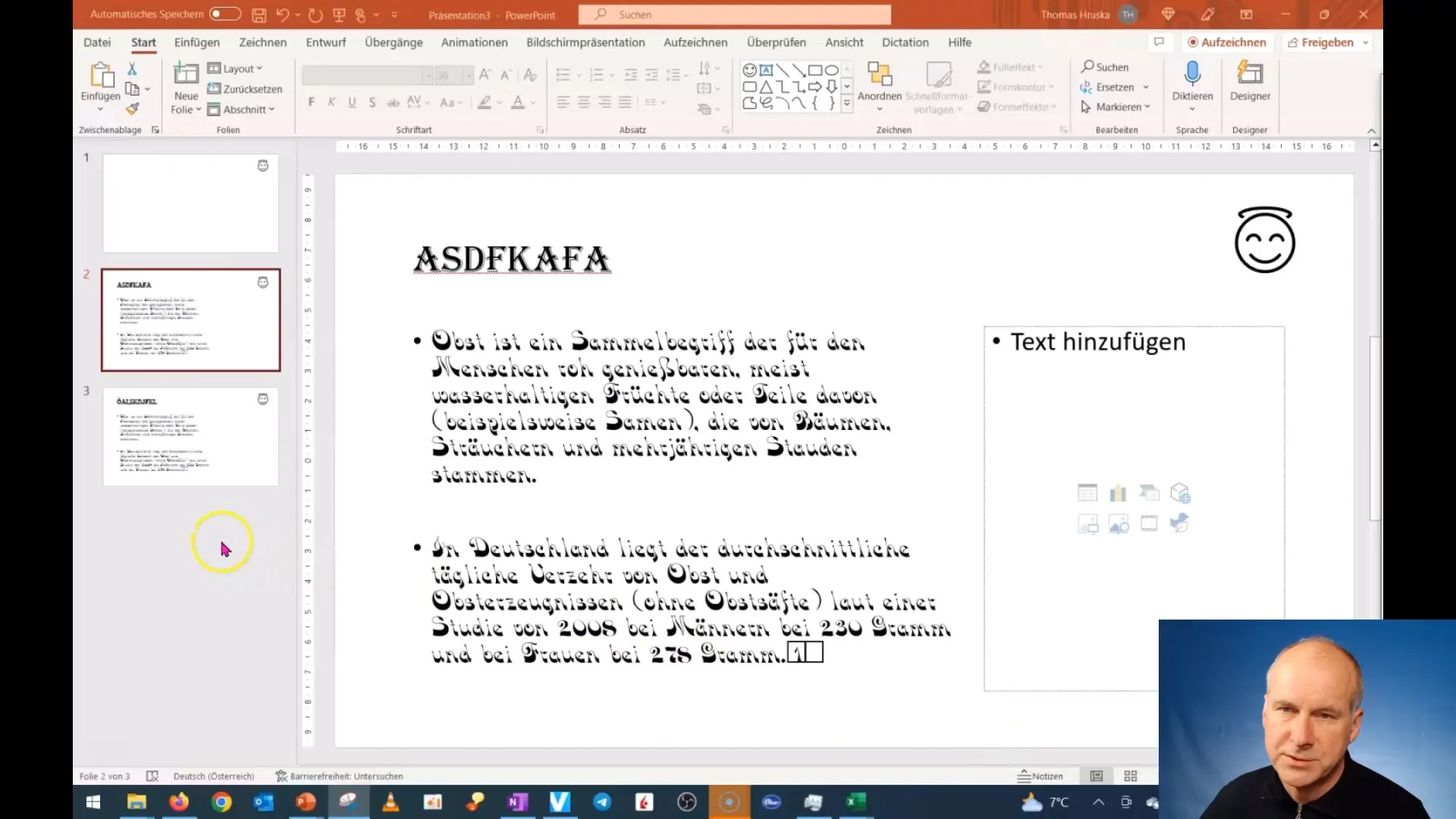
Another useful trick is the use of the outline view. In this view, you can see an overview of all the headings and subheadings of your slides and optimize the slide structure.
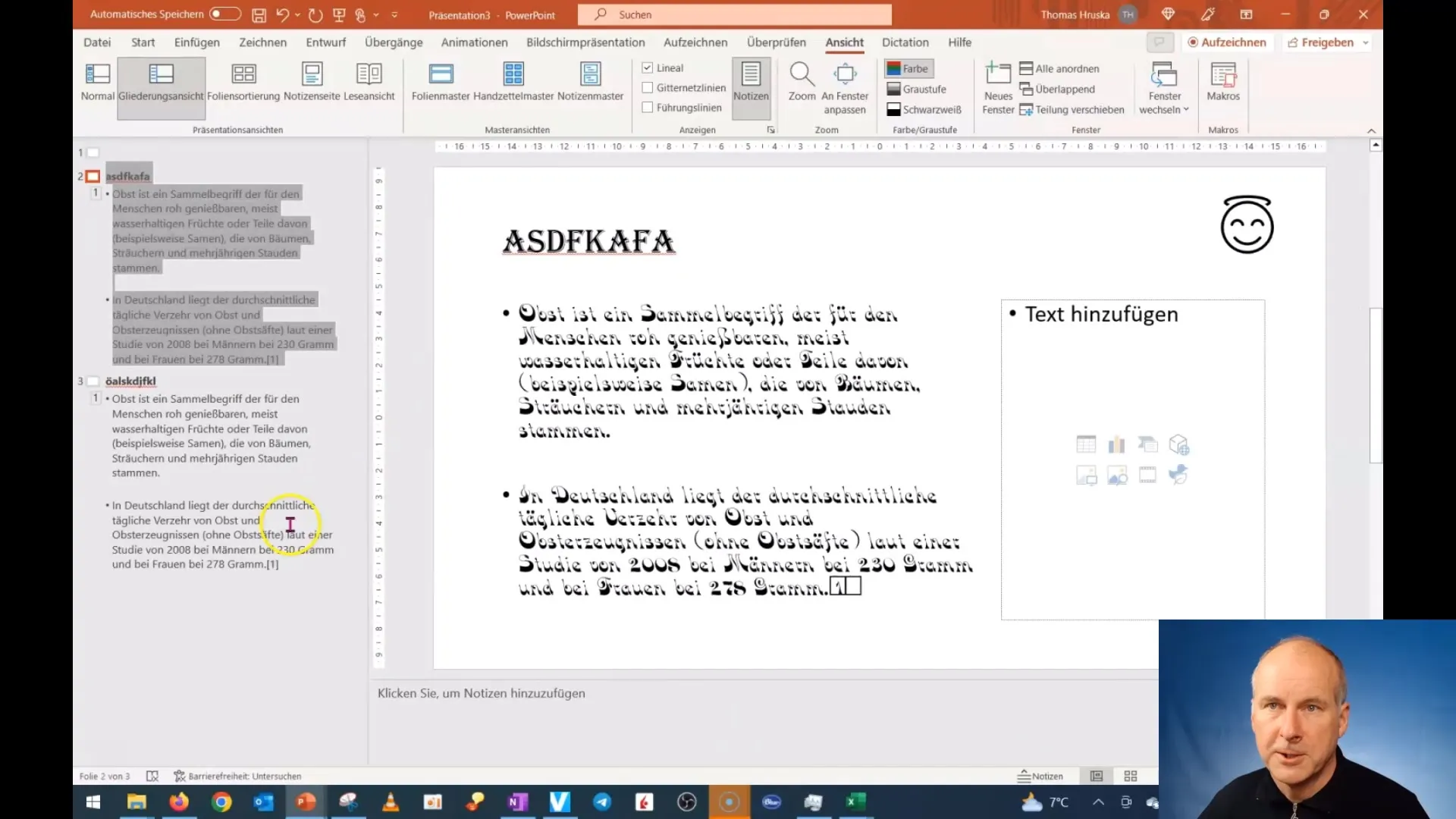
If you have many slides, the outline view is ideal for maintaining clarity. You can show or hide the content display to only show the relevant information.
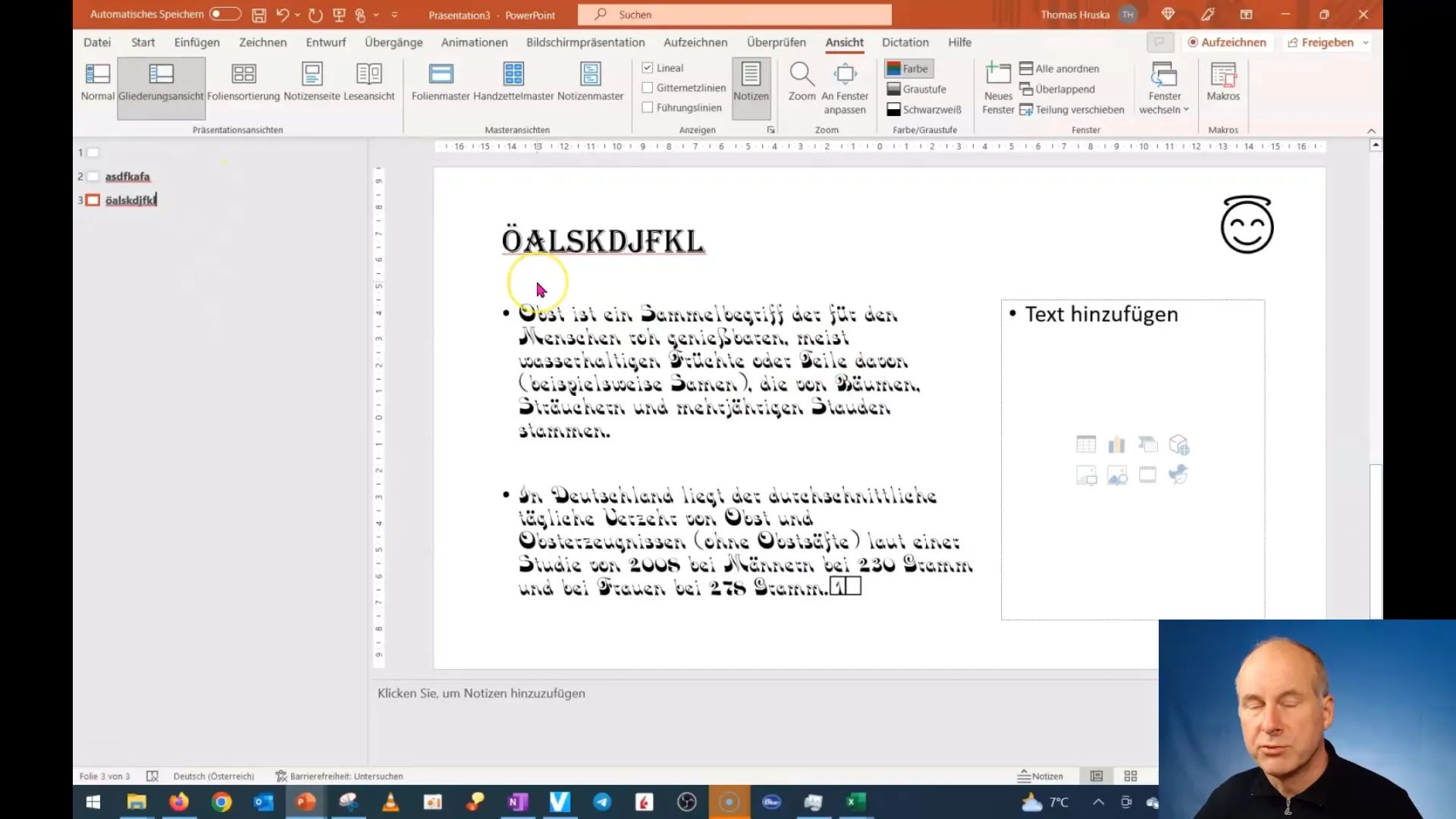
This approach is particularly helpful when working on long-term projects or instructional units.
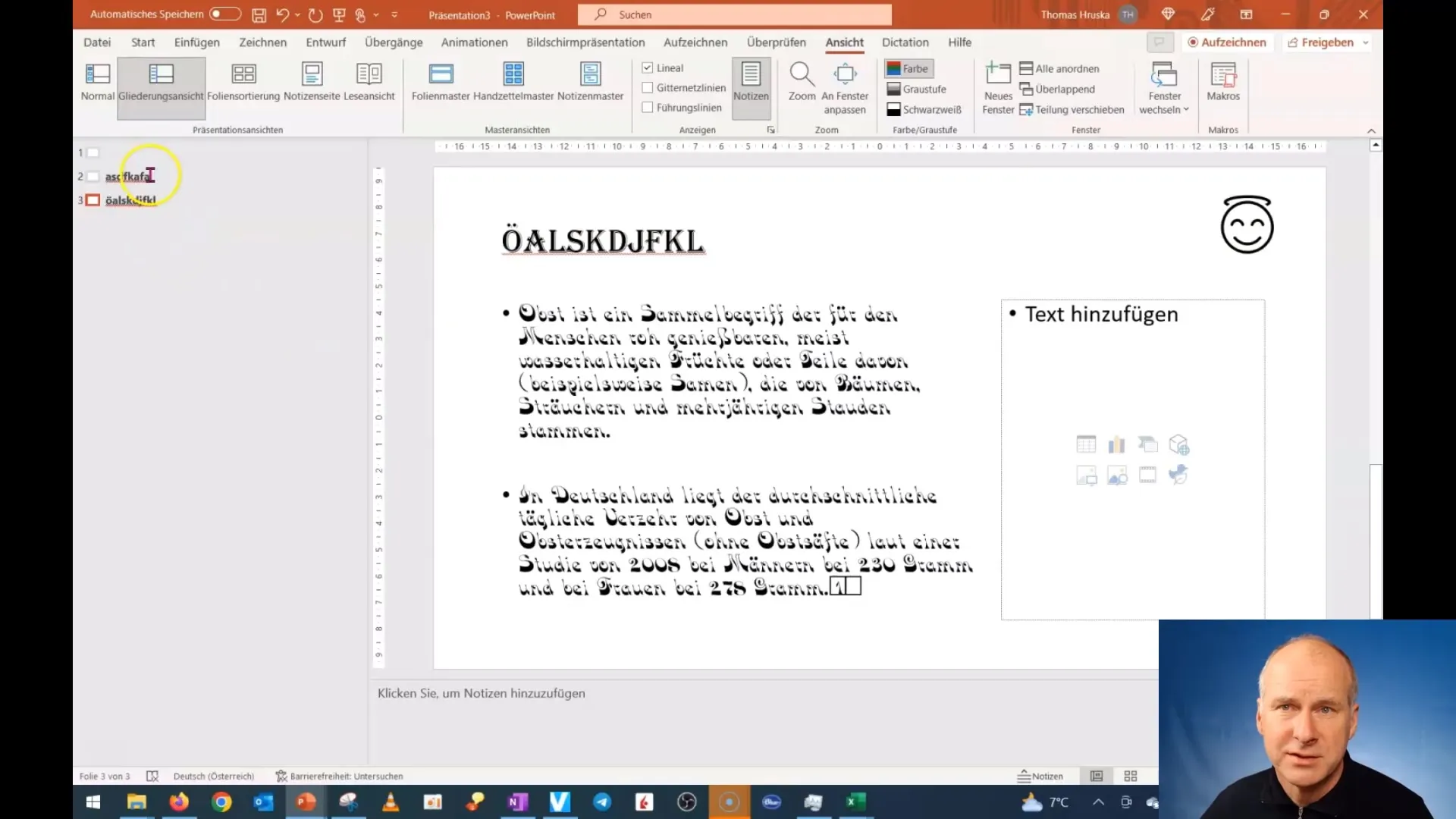
Now you have learned the basics of editing and setting up layouts. In the next unit, you will learn how to insert placeholders and further customize your layout.
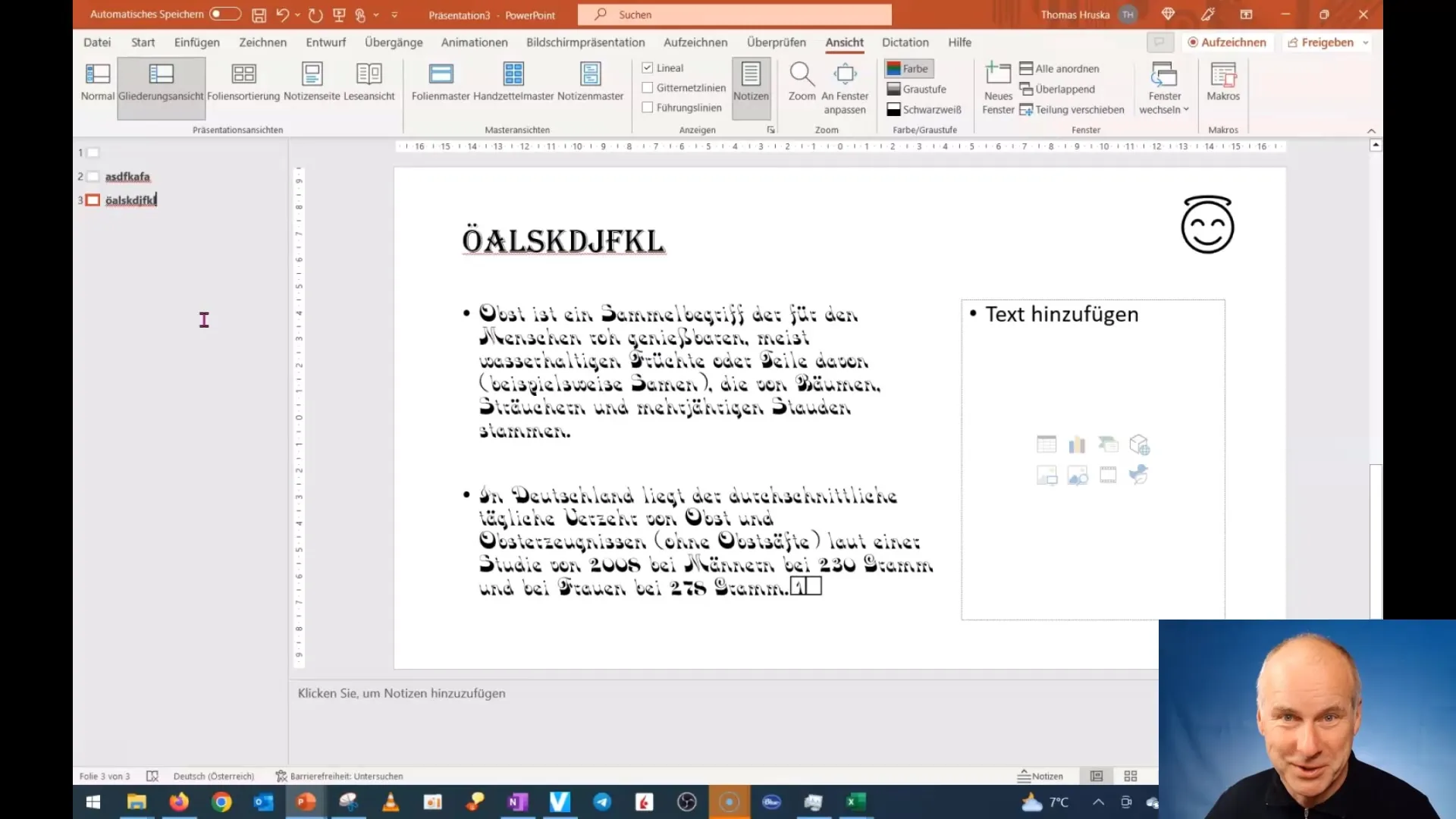
Summary
In this guide, you have learned how to adjust and duplicate slide layouts to optimize your presentation. You have learned the benefits of the outline view and how layouts help you effectively utilize an existing structure.
Frequently Asked Questions
How do I change the font in a layout?You go to the master view, select the layout, and change the font in the text box.
Can I use a layout for multiple slides?Yes, you can create a layout and apply it to multiple slides to ensure a consistent design.
How does the outline view work?The outline view displays all slide headings and subheadings, allowing you to organize the structure of the presentation.
How can I insert placeholders in layouts?You will learn more about inserting placeholders in the next unit of this series.


